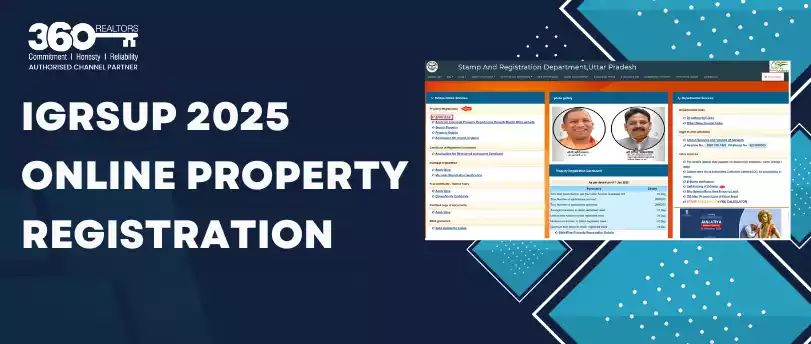Real estate is a very important sector of the industry and has gone through various regulatory changes in the last few years. The main objective for all these rules and regulations is to bring clarity and transparency in all property related transactions and to ensure that both buyers and sellers get justice and no realty deals gets unnoticed. Many a times the transactions relating to the immovable properties are undervalued and subsequently underreported. A lot of efforts have already been made to increase the tax base and include more and more buyers and sellers in its gamut and many changes have been made regarding the same like imposing restrictions on power of attorney transactions, pan card details being made mandatory for all realty transactions, record keeping made more systematic and rationalized and lastly the announcement of circle rate. In spite of all these rules and regulations, still there is a lot more that needs to be taken care of in this regard.
Thus, in its initiative to improve the reporting mechanism, streamline the entire processes and widen the tax base, 1st June 2013 onwards, TDS or Tax Deduction at Source was introduced for all real estate transactions, by Mr. P. Chidambaram, which is to be monitored under Section 194-IA of the Income Tax Act.
What is TDS on Property?
As per the Finance Bill 2013, this section refers to each and every person who is the buyer of property as a transferee and is responsible for paying to the seller of the property, also termed as the transferor, the amount for the transfer of any immovable property apart from agricultural land. The transferee needs to make a tax deduction of approx. 1% of the sale proceeds of property as the income tax while making the payment in any mode be it by cash, cheque or draft. However, this regulation does not apply in cases where the consideration or transaction amount for the transfer of property is less than Rs 50 lakhs.
For example, if Mr. A purchases a property from Mr. B worth Rs 70 lakhs, then A is liable to make a TDS deduction of 1% of Rs 70 lakhs and it is his responsibility to deposit the same in the government’s treasury.
If the buyer makes the payment in installments, in such situations, TDS has to be deducted separately for every installment paid. Heavy penalty is imposed in case of delay in making the deduction, or non-deduction or delay in depositing the same or non-deposit of TDS. The deduction made has to be deposited into government’s bank account via NSDL’s e-Tax payment option.
So, all these provisions are applicable to real estate transactions taking place on or after 1st June 2013, and it is not important for the person making the TDS deduction to have a TAN No.
Further to clarify, any land except an agricultural land, a building or part of building can be referred to as immovable property
And, any land cannot be treated as an agricultural land if it meets the below mentioned criteria:
a) If the land parcel lies within the Municipality jurisdiction or Cantonment Board and has a populace exceeding 10,000
b) If the land lies in an area within the below mentioned distance:
(i) When the Municipal population exceeds 10,000 but is below 1, 00,000 and it lies within 2 kms from Municipal limit or cantonment area.
(ii) When the municipality population exceeds 1, 00,000 but is below 10, 00,000 and lies within 6kms from Municipal limits or cantonment board.
(iii) In case the population exceeds 10, 00,000 and the land is within the distance of 8kms from Municipal limits.
Another mandatory requirement for the deductee is to submit his PAN details to the deductor. As per section 206AA, “Effect of non-furnishing of PAN on rate of tax” in case the deductee fails to do so, the deductor is bound to deduct 20% of TDS rather than 1%.
The tax deducted needs to be credited to the government’s treasury within a time duration of seven days starting from the month end in which the deduction was made. The sum credited has to be along with a challan-cum-statement in Form No. 26QB.
The TDS can be deposited either online or offline. In case the buyer chooses to pay online through the following link- https://onlineservices.tin.egov-nsdl.com/etaxnew/tdsnontds.jsp, the Form 26QB gets redirected to the buyer’s e-payment gateway by itself and is further followed by procedures as per the buyer’s choice.
In case the TDS has to be deposited offline, the buyer needs to take a print out of the completely filled form and submit the same along with the sum of money to be deposited at any of the authorized bank branches.
Post tax deposit and after the successful submission of Form 26QB the buyer has to procure the Form 16B (Certification of TDS under 194IA from Centralized Processing Cell of TDS (CPC-TDS) and furnish the same to the property seller as a proof of TDS deducted. Under Rule 31A, this has to be done within a time period of two weeks or fifteen days from the last date for submitting the challan-cum-statement in Form No. 26QB. Form 16B can also be generated and downloaded from www.tdscpc.gov.in , the web site specifically mentioned by the Director General of Income-tax (System). In case any correction needs to be done in Form 26QB, the same can be done online also.
As per Sec. 201(1A), in case of partial deduction of TDS or non-deduction of the same, an interest @ 1% shall be charged per month or for part of the month from the due date when the TDS was to be deducted and the date when it was actually deducted. And, in case of non-deposit of TDS or partial deposit of the same, an interest @ 1.5% shall be charged monthly or for that part of the month from the due date when the deduction was made to the date of actual payment.
Thus, all these steps have been taken with an intention to broaden the tax base and put a control on tax evasion. The situation could have been even better if the basic exemption slab of current Rs 50 lakhs was reduced further in order to increase the base. Thus, the assesse will have to be on a run since the whole procedure is time bound and at the same time requires 100% compliance failing which the party is liable to heavy penalties. Steps need to be taken in order to make the entire procedure simpler for the ease and convenience of both the buyers and sellers.
Important:
Any person making purchase before 1 June 2013, but making a part payment initially and the balance to be paid post 1 June 2013 shall also be covered under this law. The rule shall also be applicable in case when the buyer purchases an under construction property before and the part payment needs to be paid after June 1, 2013.






